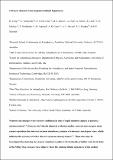| dc.contributor.author | Yong, D | |
| dc.contributor.author | Kobayashi, C | |
| dc.contributor.author | Da Costa, GS | |
| dc.contributor.author | Bessell, MS | |
| dc.contributor.author | Chiti, A | |
| dc.contributor.author | Frebel, A | |
| dc.contributor.author | Lind, K | |
| dc.contributor.author | Mackey, AD | |
| dc.contributor.author | Nordlander, T | |
| dc.contributor.author | Asplund, M | |
| dc.contributor.author | Casey, AR | |
| dc.contributor.author | Marino, AF | |
| dc.contributor.author | Murphy, SJ | |
| dc.contributor.author | Schmidt, BP | |
| dc.date.accessioned | 2022-04-11T18:45:38Z | |
| dc.date.available | 2022-04-11T18:45:38Z | |
| dc.date.issued | 2021 | |
| dc.identifier.uri | https://hdl.handle.net/1721.1/141835 | |
| dc.description.abstract | Neutron-star mergers were recently confirmed as sites of rapid-neutron-capture (r-process) nucleosynthesis1-3. However, in Galactic chemical evolution models, neutron-star mergers alone cannot reproduce the observed element abundance patterns of extremely metal-poor stars, which indicates the existence of other sites of r-process nucleosynthesis4-6. These sites may be investigated by studying the element abundance patterns of chemically primitive stars in the halo of the Milky Way, because these objects retain the nucleosynthetic signatures of the earliest generation of stars7-13. Here we report the element abundance pattern of the extremely metal-poor star SMSS J200322.54-114203.3. We observe a large enhancement in r-process elements, with very low overall metallicity. The element abundance pattern is well matched by the yields of a single 25-solar-mass magnetorotational hypernova. Such a hypernova could produce not only the r-process elements, but also light elements during stellar evolution, and iron-peak elements during explosive nuclear burning. Hypernovae are often associated with long-duration γ-ray bursts in the nearby Universe8. This connection indicates that similar explosions of fast-spinning strongly magnetized stars occurred during the earliest epochs of star formation in our Galaxy. | en_US |
| dc.language.iso | en | |
| dc.publisher | Springer Science and Business Media LLC | en_US |
| dc.relation.isversionof | 10.1038/S41586-021-03611-2 | en_US |
| dc.rights | Creative Commons Attribution-Noncommercial-Share Alike | en_US |
| dc.rights.uri | http://creativecommons.org/licenses/by-nc-sa/4.0/ | en_US |
| dc.source | arXiv | en_US |
| dc.title | r-Process elements from magnetorotational hypernovae | en_US |
| dc.type | Article | en_US |
| dc.identifier.citation | Yong, D, Kobayashi, C, Da Costa, GS, Bessell, MS, Chiti, A et al. 2021. "r-Process elements from magnetorotational hypernovae." Nature, 595 (7866). | |
| dc.contributor.department | Massachusetts Institute of Technology. Department of Physics | |
| dc.contributor.department | MIT Kavli Institute for Astrophysics and Space Research | |
| dc.relation.journal | Nature | en_US |
| dc.eprint.version | Author's final manuscript | en_US |
| dc.type.uri | http://purl.org/eprint/type/JournalArticle | en_US |
| eprint.status | http://purl.org/eprint/status/PeerReviewed | en_US |
| dc.date.updated | 2022-04-11T18:37:13Z | |
| dspace.orderedauthors | Yong, D; Kobayashi, C; Da Costa, GS; Bessell, MS; Chiti, A; Frebel, A; Lind, K; Mackey, AD; Nordlander, T; Asplund, M; Casey, AR; Marino, AF; Murphy, SJ; Schmidt, BP | en_US |
| dspace.date.submission | 2022-04-11T18:37:15Z | |
| mit.journal.volume | 595 | en_US |
| mit.journal.issue | 7866 | en_US |
| mit.license | OPEN_ACCESS_POLICY | |
| mit.metadata.status | Authority Work and Publication Information Needed | en_US |
